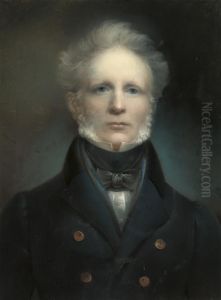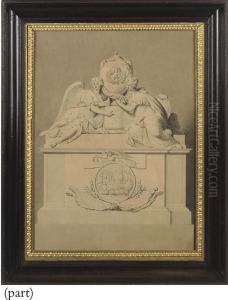John Ii Bacon Paintings
John Bacon was an English sculptor who is recognized for his high-quality work in the late 18th century. Born on November 24, 1740, in Southwark, London, he showed an early talent for modeling, creating likenesses from materials like putty, chalk, and clay. Despite his humble beginnings—the son of a cloth worker—Bacon's skill quickly garnered attention.
Bacon initially apprenticed with a porcelain manufacturer, where he learned to cast and fire clay, skills that would serve him well in his future career as a sculptor. His talent was such that he won a premium from the Society of Arts in 1758, and subsequently a scholarship to the Royal Academy schools, which were established in 1768. During his time at the Royal Academy, he won gold medals for his sculptures, establishing his reputation as a leading artist in his field.
Bacon's work was predominantly in the neoclassical style, which was prevalent in Europe during the time. He was highly regarded for his ability to work with marble, and he produced a wide range of works including monuments, busts, and statues. His notable works include the statue of Samuel Johnson in St. Paul's Cathedral, and the monument to the Earl of Chatham in Westminster Abbey.
He was also known for his innovative techniques in working with marble, which allowed him to create more detailed and refined pieces than many of his contemporaries. Bacon's success as a sculptor also lay in his ability to imbue his classical subjects with a sense of contemporary relevance and vitality, making his work popular with a wide audience.
Bacon served as a respected member of the Royal Academy for many years and was appointed a trustee of the British Museum, a testament to his status in the art world of his time. He died on August 4, 1799, leaving behind a legacy of artistic excellence that would influence future generations of sculptors. His son, John Bacon the Younger, also became a notable sculptor, continuing the artistic tradition of his family.

